Fossil Records Show Hell Ants Had “Mad Max” Style Mandibles
16:27 minutes
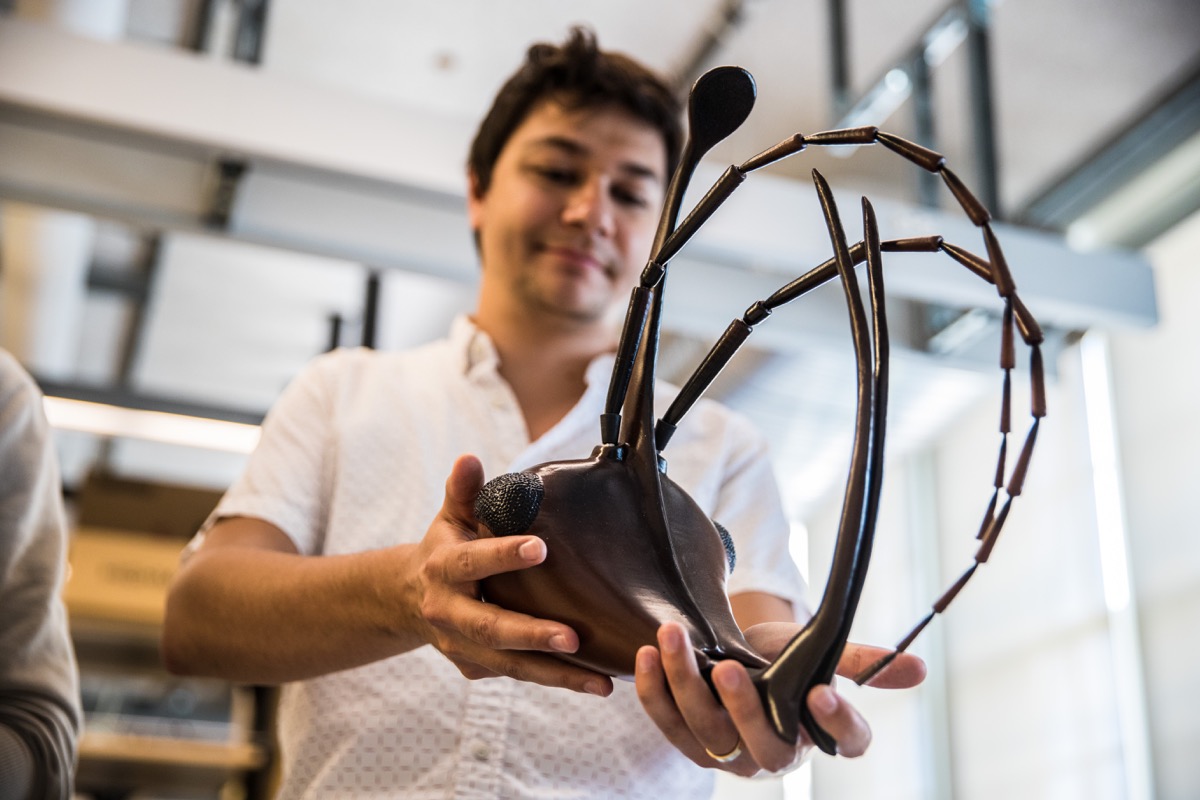
We’re back with another installment of the Charismatic Creature Corner! This is Science Friday’s place to highlight creatures (broadly defined) that we think are charismatic (even more broadly defined).
This month, we’re bringing you an ancient ant relative with a possibly offputting name: the Hell Ant. This insect was a subspecies of ants that lived in the Cretaceous period, when T. rexes and velociraptors roamed the earth. The largest hell ants were about a centimeter and a half long, which isn’t much different than some modern ants.
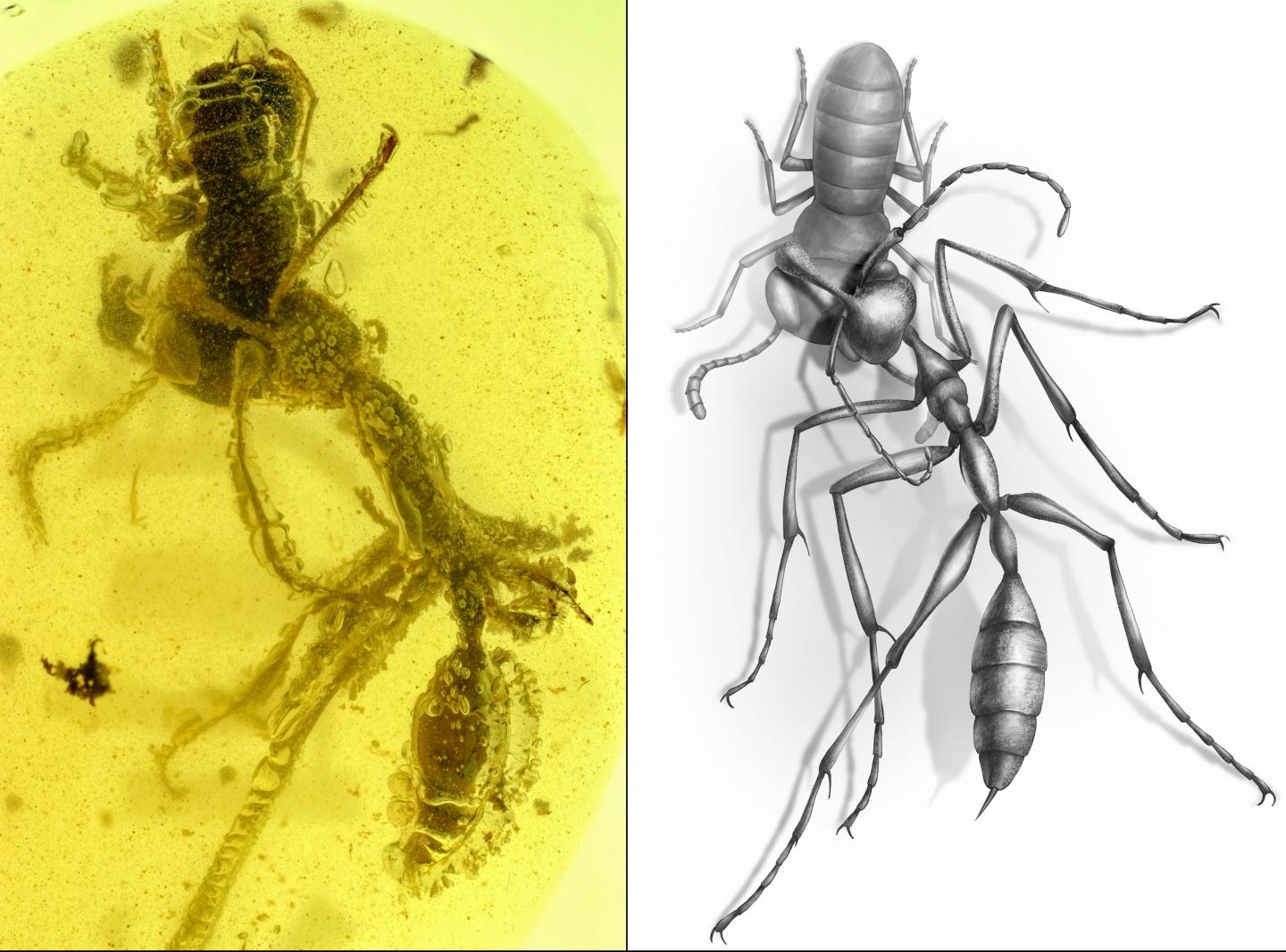
What makes hell ants so cool, however, is their dramatic headgear. They sport jaws that look like mammoth tusks, sticking out of their faces and moving up and down, a motion similar to our own jaws. Hell ants also had horn-like protrusions coming out of their foreheads, which may have helped them catch and eat prey.
SciFri’s new Charismatic Creatures Correspondent Kathleen Davis tries to convince Ira that these extinct insects are worthy of the coveted Charismatic Creature title, with the help of Phil Barden, assistant professor of biology at the New Jersey Institute of Technology in Newark, New Jersey. Take a look at more photos of Barden’s research and the hell ant models below!
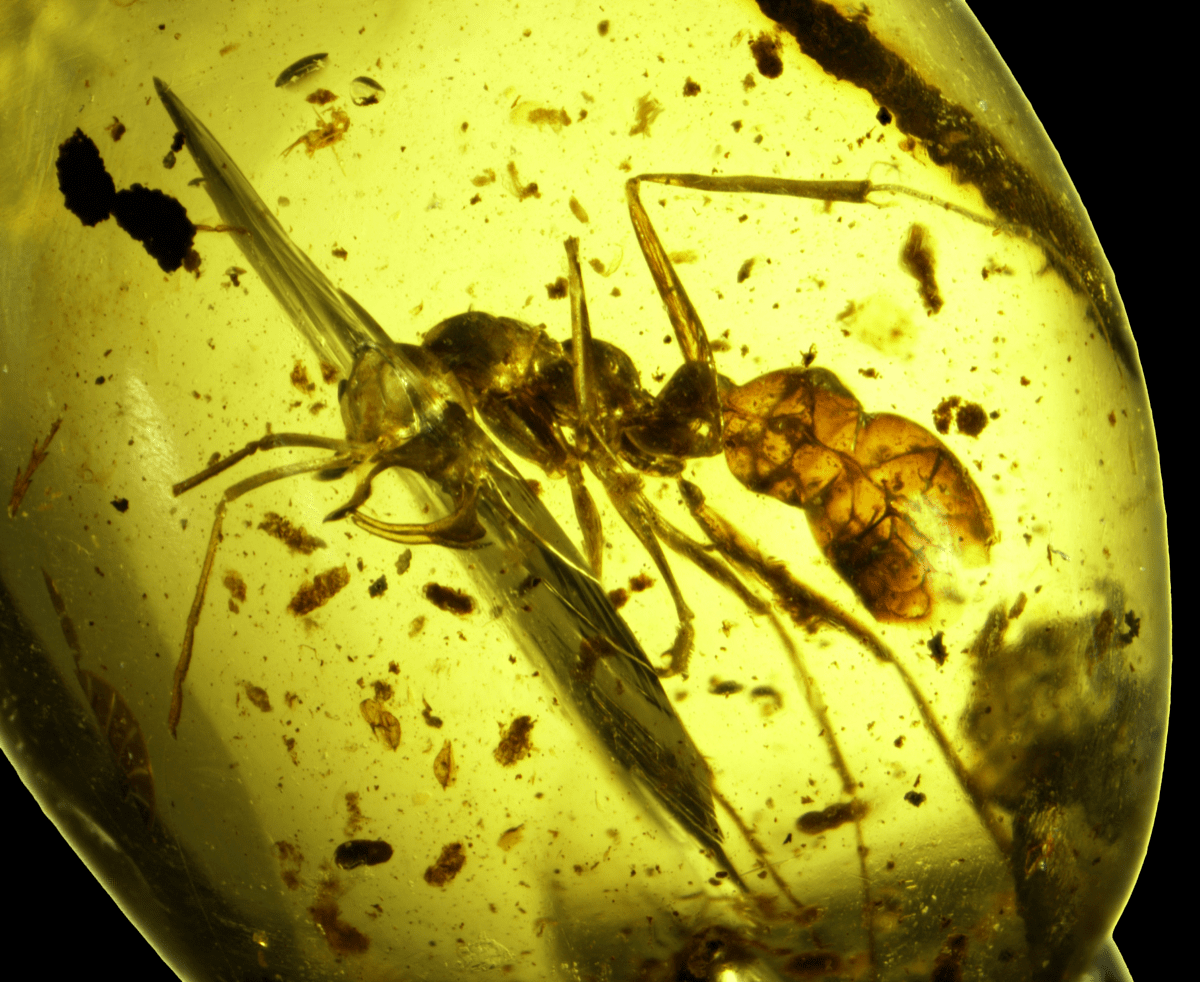
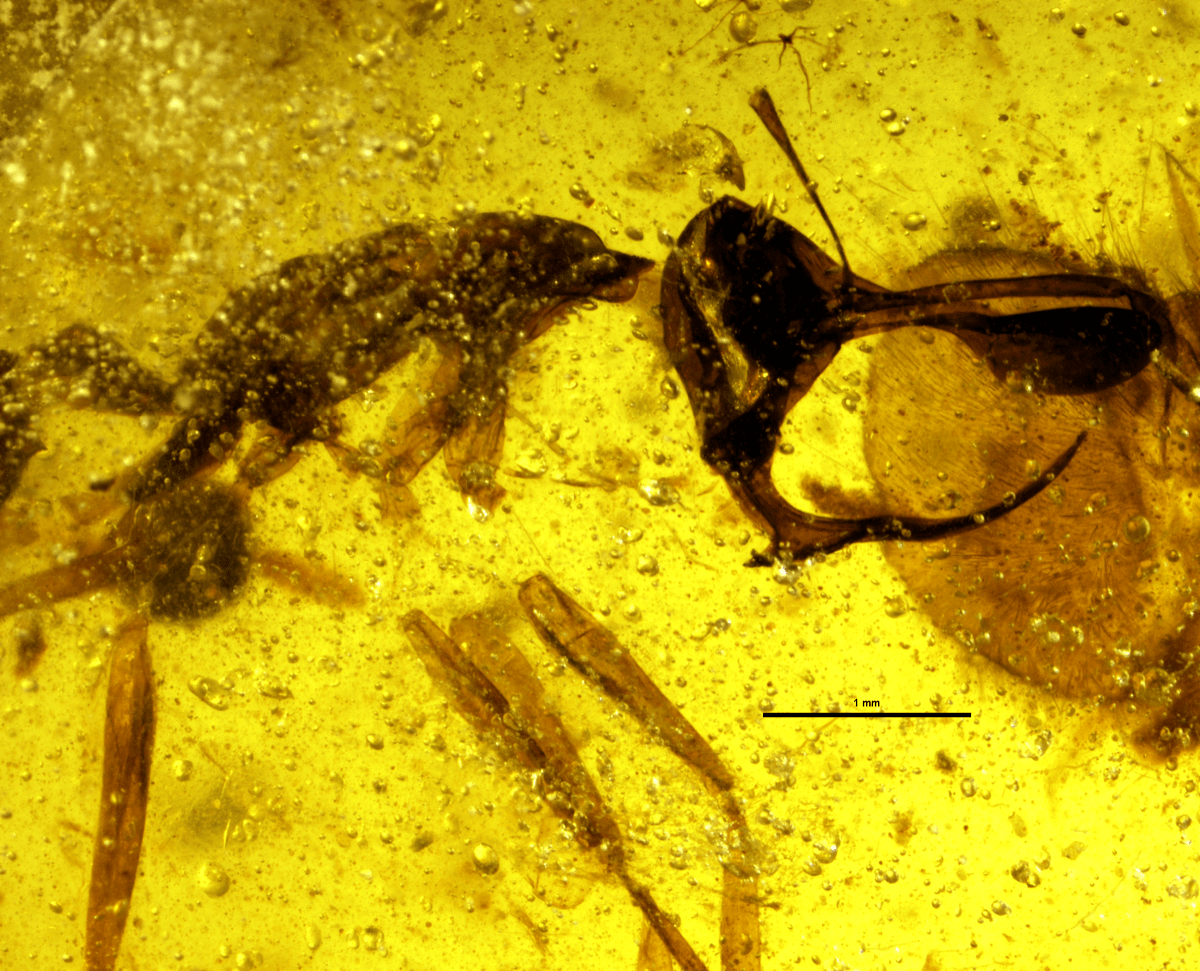
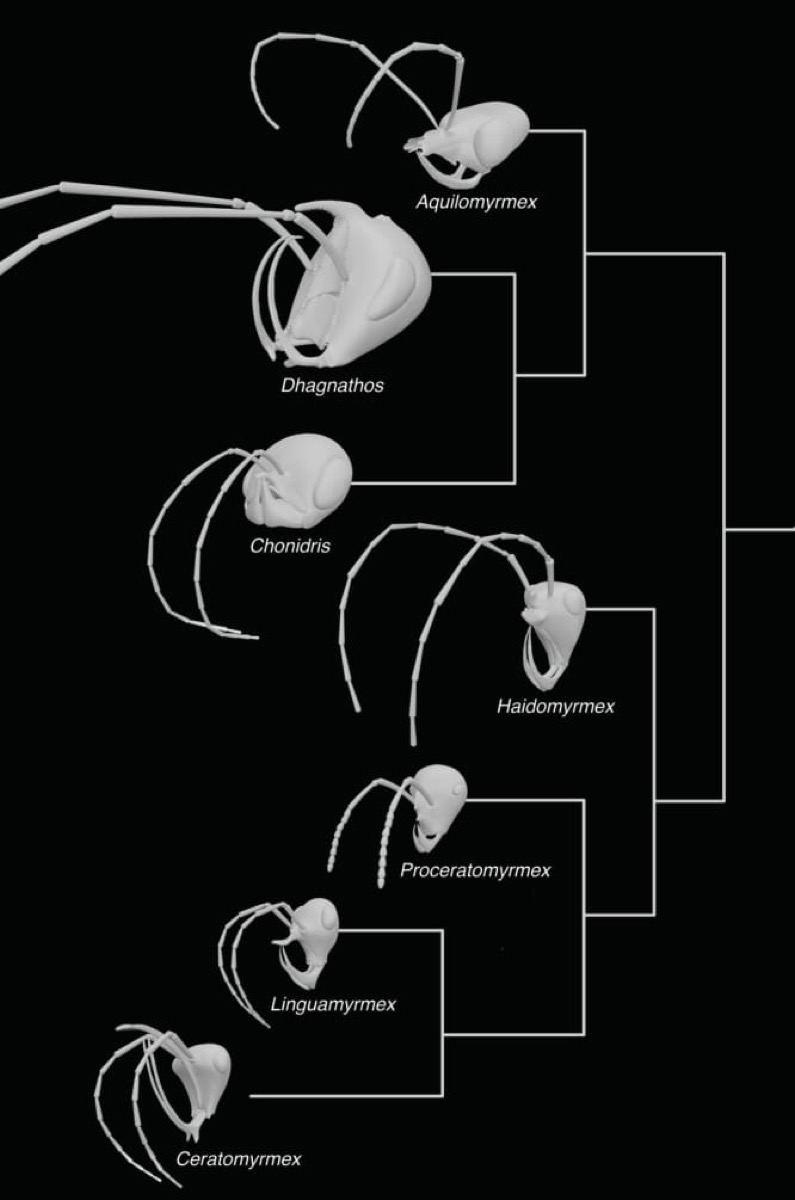
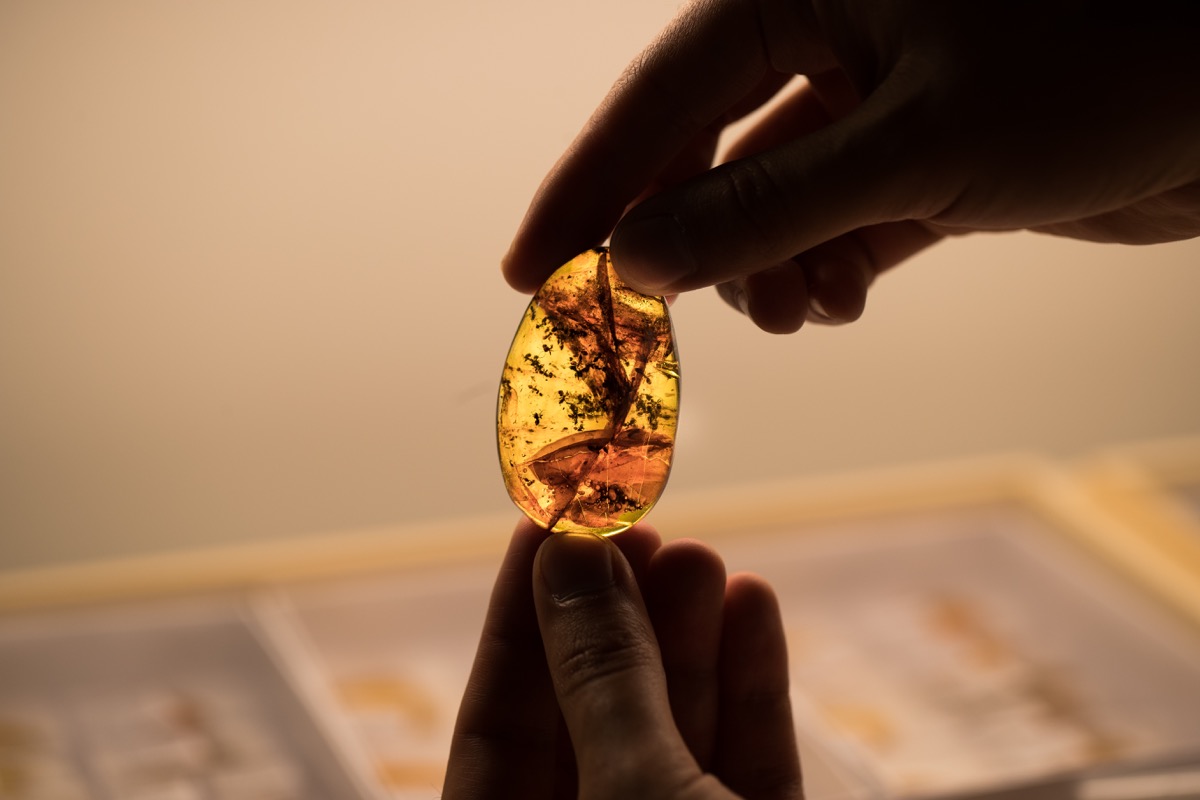
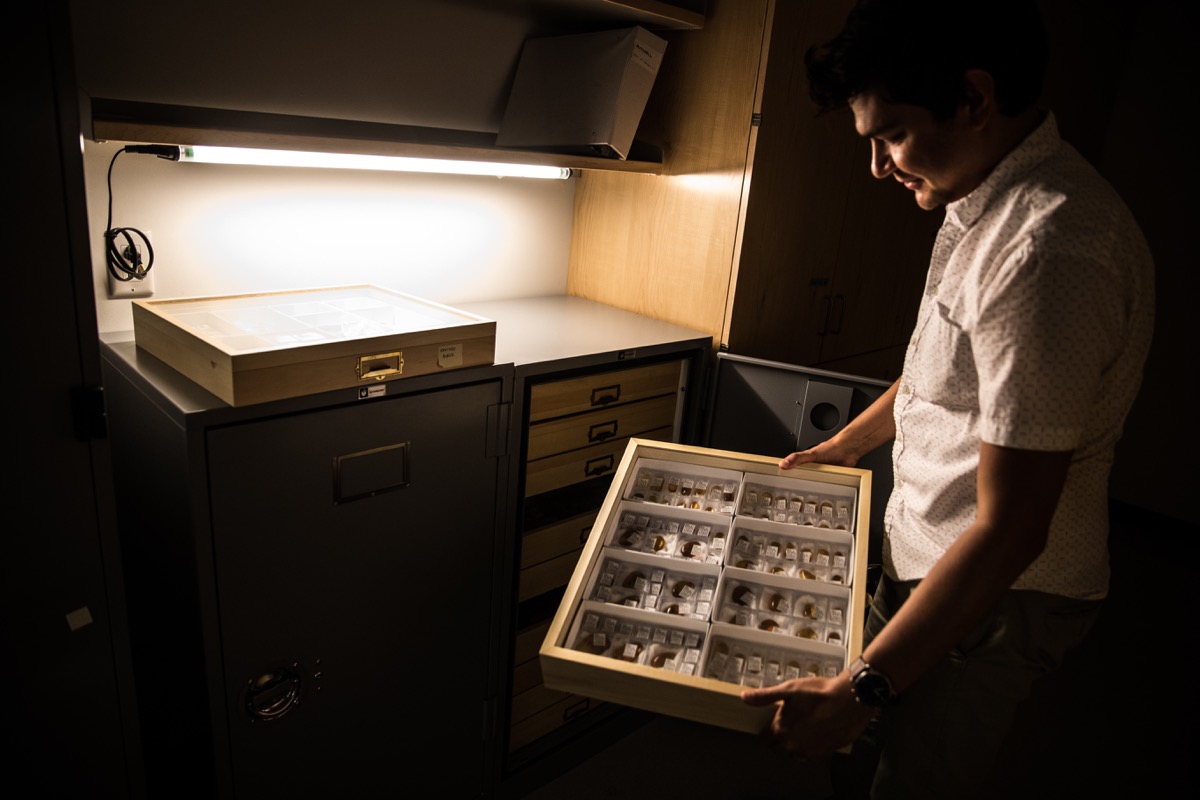
Invest in quality science journalism by making a donation to Science Friday.
Phil Barden is an assistant professor of Biology at the New Jersey Institute of Technology in Newark, New Jersey.
IRA FLATOW: This is Science Friday. I’m Ira Flatow. And now it’s time for another Charismatic Creature Corner.
[JUNGLE SOUNDS]
[BIRD CAWS]
[LION ROARS]
[MEOW]
Joining us today is our Charismatic Creature Correspondent, Kathleen Davis. Hi, Kathleen.
KATHLEEN DAVIS: Hey, Ira. I am here to plead the case that a certain critter is worthy of the title of a Charismatic Creature in the eyes of the Sci Fri community. So if you remember, our other Charismatic Creature Corners, you know that by creature, we mean just about anything. We have argued for slime molds being called charismatic. And by charismatic, we mean something that is as worthy of our interest and enchantment as, say, a little baby sloth.
IRA FLATOW: Ooh, that is a high bar.
KATHLEEN DAVIS: Of course, because who isn’t delighted by tiny sloths?
IRA FLATOW: [LAUGHS]
KATHLEEN DAVIS: Part of the challenge, though, is that this week, I am not bringing you a baby sloth because that would just be too easy. Ira, are you familiar with the hell ant, by chance?
IRA FLATOW: You know, I can’t say that I have ever met one.
KATHLEEN DAVIS: Right off the bat, do you think this sounds like a charismatic creature?
IRA FLATOW: With the name Hell in it, I don’t know, you know. You’re here to convince me. So go ahead and do that.
KATHLEEN DAVIS: So how about if I add dinosaurs to it?
IRA FLATOW: Well, now you’ve gotten my attention.
KATHLEEN DAVIS: So Hell Ants are a subspecies of ants that lived in the Cretaceous period. That’s when T rexes and velociraptors were running around the earth. The biggest hell ants were about a centimeter and a half long, which isn’t much different than what we get from modern ants.
But what makes hell ants so cool is that they have pretty wild headgear. So they have these jaws that kind of look like mammoth tusks that stick out of their faces and go up and down in the same motion that our jaws do. Hell ants also have these horn-like protrusions that come out of their foreheads. Experts say all these things going on the hell ant’s face probably helped them catch and eat prey.
So I can tell that you’re not quite convinced yet that hell ants are charismatic creatures. So to help me out, I’ve got Dr. Phil Barden. He’s an assistant professor of biology at the New Jersey Institute of Technology in Newark.
Welcome to Science Friday, Dr. Barden.
PHIL BARDEN: Hi. Thanks so much for having me.
IRA FLATOW: Hi, Phil. Good to have you.
PHIL BARDEN: Hi there.
KATHLEEN DAVIS: So can you explain to us why hell ants are called hell ants?
PHIL BARDEN: I can. Yes. You know, we came up with a common name, hell ant, a few years ago because we sort of got tired of saying these bizarre ants with these funky appendages that were a hundred million years old. And the reason why we came up with the name hell ants specifically is because the first species that was described, the scientific name for it was Haidomyrmex cerberus.
And so Haidomyrmex meaning haido, as in Hades, and myrmex is sort of Greek for ant. Then cerberus, if you’re familiar, is sort of the hound that guards hell. So this researcher named the first ant Haidomyrmex cerberus back in the mid ’90s because of the animal’s really striking bizarre appearance.
IRA FLATOW: I want to hear more about that headgear that Kathleen mentioned earlier. Why would an ant need to have such a strange face? Why would it have evolved this way? I need to know more.
PHIL BARDEN: Yeah, that’s a great question. Well, one of the reasons why it’s so strange is because there’s so many ants that we know about today. So on the planet currently, there’s about 15,000 known ant species. And they have all kinds of funky things going on. They have really strange mouth parts. Some of them are highly specialized, but none quite like what we see in hell ants.
So what we think is happening here is this kind of interesting pattern called evolutionary integration. So what happens is when you have this innovation in the way that different features on a body move, it might allow two different features to interact for the first time. And that opens up this new kind of evolutionary pathway to new adaptive space.
And what we think is with hell ants, first of all, this ability to move their mandibles up and down. And then that put the head and the mouth parts together in this integration style for the first time. And that is what kind of generated this crazy range of adaptations that we don’t see today.
KATHLEEN DAVIS: There are different, types of hell ants. Headgear, is that right? It sounds like they can be a little bit different.
PHIL BARDEN: Yeah, absolutely. So there’s a wide variety in the horns that we see in these ants. Some of them are just tiny teeth. They’re almost kind of cute. It’s just a little nub. And then some of them are these huge elongate unicorn-like horns.
Some of them are serrated. They look like chainsaws. Some of them are bifurcated and really lobe-like. And you know, some also have these spoon-like projections so they look like these giant lobe-like paddles that come right out of the forehead.
And it really does make you wonder how and why this evolved, because it’s something that we just never see today.
KATHLEEN DAVIS: Ira, did you hear that, that some of them had cute little teeth?
IRA FLATOW: I like the spoon. I mean, I’ve never heard of an animal with a spoon-like projection coming out of their head. So you’re sort of winning me over on this one.
KATHLEEN DAVIS: Well, Phil, you’ve got this whole lab at the New Jersey Institute of Technology that studies social insects, including the hell ants. How do you know that hell ants were social?
PHIL BARDEN: Yeah, that’s a great question. So hell ants are right at the base of the ant evolutionary tree. So the first time that we see ants in the fossil record about 100 million years ago, some of them are hell ants. And so one of the first questions we had was whether or not these were social in the same way that modern ants are, if they have a social society and a structure. We have queens and workers.
We know that hell ants are social because we have multiple different castes of the species. So we have workers and queens from the same species. And the reason we know that is– you have to learn a little bit about how modern ants start colonies. So if you look at a modern ant colony, what you’ll see is that there’s a queen and a variety of workers. All the workers are female, by the way. And the queen is also female, of course.
And so what happens is the queens have wings. And when queens start a new colony, they actually fly off and they tear off their own wings to dig out a new colony. And that gives you an idea of where at in the kind of social development these species are.
And we have hell ants that have wing scars, indicating that they were queens starting new colonies. They chewed off their own wings, and they were in the process of starting a colony. We also have workers and we have queens with wings. So we have the whole kind of ensemble of social caste members way back in the Cretaceous with these hell ants.
KATHLEEN DAVIS: Phil, I don’t know if this is going to help or hurt our case here. But I have to ask you about this one particular hell ant your lab has studied. It’s trapped in amber, as many of these hell ants are. And this one in particular is in the process of eating an ancient cockroach. I would imagine that this was a pretty exciting find for a hell ant researcher, was it not?
PHIL BARDEN: It really was. Yeah. I mean, this specimen was kind of the final puzzle piece in this mystery, because the first time it was dug up about 100 years ago. And it’s been a really kind of open question about how and why it is that we have this ancient diversity in the fossil record.
And your dinosaur analogy is accurate because hell ants really are the dinosaurs of the ant world. They’re this group of animals that have specializations that we no longer see today. So we speculated for a while about why it is they have these funky features.
And one of the things that we proposed was that it was this specialized feeding mode, that they were grabbing prey by moving their mouth parts up and down to basically pin them or pierce them against their own head. And we proposed this maybe in 2012 or so.
And people were a bit skeptical then. And by people, I mean the scientists who tend to be skeptical about these kinds of things. And so this fossil conclusively says that these ants had to have moved their mouth parts in this way and that they did use this strange variety of adaptations to capture their prey.
And then Ira, I’ll just mention to you. You said that you thought that the spoon bill ant was particularly interesting. That ant we actually think would have impaled prey with its mouth parts against that spoon, basically like a backstop, and then would have drank the blood of the insects, which is called hemolymph.
IRA FLATOW: This is getting better and better as you– [LAUGHS] –keep descibing it.
PHIL BARDEN: It depends on what your definition of charismatic is. That’s for sure.
KATHLEEN DAVIS: So we talked about the cockroach that was in the specimen with the hell ant. But what else existed in the hell ant circle of life as far as we know? What else would it have preyed on?
PHIL BARDEN: Yeah, that’s a cool question. So yeah, this extinct cockroach relative is called Caputoraptor. And it has this funky thing where it has basically a serrated back of the head and serrated shoulders. And people have been kind of asking why that would’ve been the case. And because this hell ant had its mandibles around, essentially, the neck of this cockroach, we started to speculate that maybe those serrated features were actually to defend against hell ants.
Outside of that Caputoraptor thing, we have a lot of early members of lineages that we know about today, so other early wasp relatives, beetles, for example. And in fact, in this time period, there were beetles that were specialized to live specifically just within ant colonies. So we know that ants were ecologically kind of impactful enough to have species that were specialized to live among them. And then I guess if we have to do the boring stuff and pan out outside of insects, you know, there are all kinds of interesting dinosaurs and pterosaurs and things that are lumbering around above the ants.
IRA FLATOW: So you have an ant that was alive during the time of the dinosaurs. And we have ants that are around today. Is there any connection, relationship, descendancy between the two?
PHIL BARDEN: So the short answer is no, that these hell ants are not the ancestors of modern ants. They’re kind of like the distant cousins. So in the same way that Tyrannosaurus rex is a relative of the pigeons you see outside– the pigeons you see outside aren’t the descendant of tyrannosaurus Rex. The hell ants are this early lineage offshoot that kind of did its own thing for a while.
But that leads to an interesting question, which is why is it that the hell ants went extinct, whereas modern ants are so ubiquitous, you see them in your kitchen counter. You see them on the sidewalk. Pretty much anywhere you go on the planet where there’s land outside of Antarctica, you find ants.
And so one open question we’re working on now is, why is it that some early ant lineages kicked the bucket, whereas other groups became really kind of highly successful?
IRA FLATOW: Yeah. You know, I was wondering what happened to them. If they’re such great hunters and they have such great weapons on their head, what– you know, was it climate change, or was there something that wiped them out?
PHIL BARDEN: Yeah. We don’t know exactly the time where we lose hell ants. So the last window into the fossil record that we have hell ants is about 78 million years ago. And then the next time that we have a fossil deposit that we have ants is actually after the K-Pg extinction event 65 million years ago, where we lose non-avian, non-bird, dinosaurs.
So we suspect that hell ant loss could be related to that last mass extinction event. And one thing that we’ve kind of speculated about is this is a highly specialized adaptation, and it’s– I mean, it’s really a way to commit to this strategy. There’s no backing out from developing these really highly specialized horns and mandibles.
So it could be that this extreme specialization led hell ants to be susceptible to extinction. We found that many of the groups that do really well around extinction periods tend to be generalists, jacks of all trades, that can maybe live in a variety of environments or feed on a variety of different things, because there’s a lot of uncertainty in times of extinction. So it could have been that hell ants really just didn’t have this generalist strategy. And so this highly specialized strategy was really tricky for them and led to their ultimate demise.
IRA FLATOW: You know, you’re not only making a good case for a Charismatic Creature, but you’re making a case that we should be seeing these hell ants along the other dinosaurs in museums, right?
PHIL BARDEN: That’s right. Yeah. I really do think that people maybe could use some extinct insect analogs. I push for hell ants because, you know, I happen to study fossil ants and I think they’re great. But there are a lot of fossil insects that people don’t really think about.
We don’t see lunchboxes with fossil insects on them. People might know that there were maybe giant dragonflies way back when. But outside of that, people tend to not think about fossil insects. And I think that that could be room for improvement because people see insects in their everyday life. And so if they are more inclined to think about insects going extinct, maybe they think that extinction is a little bit more familiar and a little bit closer to them than if it’s something like a tyrannosaurus rex that they might see once every few years or something in a museum.
IRA FLATOW: I’m Ira Flatow. This is Science Friday from WNYC Studios. In case you just joined us, we’re talking with Dr. Phil Barden, assistant professor of biology at the New Jersey Institute of Technology in Newark. Also talking with Charismatic Creature Correspondent, Sci Fri producer Kathleen Davis.
KATHLEEN DAVIS: Well, I am fully onboard that hell ants are charismatic creatures. But before we wrap things up, Phil, have we missed any other aspects of hell ants that make them particularly charismatic, in your opinion?
PHIL BARDEN: Yeah, that’s right. So it depends on your definition of charismatic. I will say that one kind of interesting fun thing is that the first hell ant that I worked on a few years ago now actually had those wing scars I was talking about before. And so what that means is that if you go from the perspective of her as a new queen, she is off to found a new colony, so she’s chewed off her own wings.
And then she would have founded a new colony. She would have dug out a hole. And many modern art species, once they dig out this hole and they start living inside of it, they never leave. They actually have enough fat stores in their thorax to basically produce the first generation of young. So they never leave the nest again.
This hell ant had the wing scars and was still trapped in amber, which strongly suggests that she was out hunting, probably for her own young. And so maybe that’s something that’s a little bit charismatic and maybe endearing about hell ants is, of course, they would have cared for their offspring, just as all modern ants do. And they would have had this social structure that we may admire in some ways, although they do often do some terrifying and horrifying things. So maybe that’s something that we can kind of take away that might be a little bit charismatic, is they would have cared for their offspring and each other. And I think that’s always something that’s nice.
KATHLEEN DAVIS: Well, Ira, before I get your verdict, here’s a review of some of the things that we have learned about hell ants today. As Phil just told us, they were social creatures. They cared for their offspring. They cared for each other. They had this rich community within their colonies.
They have got some wild-looking headgear. You can’t argue with that. And hell ants are part of this murder mystery, of this gap in the ant timeline. So learning more about hell ants can potentially help us learn more about the ants that you may find in your cupboard, perhaps.
So Ira, what is your verdict– charismatic or not charismatic?
IRA FLATOW: Well, you sort of hit the trifecta of ants here. I mean, you have ants that lived during the dinosaur period. Whoever heard of those kinds of ants? And the headgear, crazy headgear, including a spoon-like projection used to attack their enemies.
And what did they attack? Cockroaches. How can you not like an ant that devours cockroaches? I wish we could do a Jurassic Park-y thing, with the amber and bring these ants back, although I may be sorry later on if they get out. But yeah, they’re definitely charismatic, in my opinion.
KATHLEEN DAVIS: Phil, I don’t even know if I have to ask you this question. But do you think these are charismatic creatures?
PHIL BARDEN: Oh, I absolutely do. Yeah.
IRA FLATOW: Well, I do appreciate you teaching me about hell ants today. I want to thank you, Phil, for taking time to be with us today.
PHIL BARDEN: Yeah. Thank you so much for having me on and for the chance to talk about these weird things.
IRA FLATOW: I hope we have advanced the case for hell ants being charismatic and maybe showing up in a science museum someplace. Dr. Phil Barden is assistant professor of biology at the New Jersey Institute of Technology in Newark. And he was here teaching us all about hell ants.
KATHLEEN DAVIS: So Ira, I do have a question for you before we go. Are there any creatures that you want to learn more about for future Charismatic Creature Corners?
IRA FLATOW: You know, I’ve learned about these creatures in the past, but I can never get enough of them. And they are the tiny tardigrades. They’re just so unique that I would like to know as much as I can about them.
KATHLEEN DAVIS: I don’t think you’re alone on that one. And we’re taking ideas for future Charismatic Creature Corners on the Science Friday VoxPop app. And we will take just about anything. We have featured slime molds, Tasmanian tigers, and now hell ants. So we want to know what is next. Listeners can nominate the next Charismatic Creature on the Science Friday VoxPop app. And you can find that wherever you get your apps.
IRA FLATOW: Thank you, Kathleen. Our Charismatic Creature Corner Correspondent Sci Fri Producer, Kathleen Davis.
KATHLEEN DAVIS: Thanks, Ira.
Copyright © 2020 Science Friday Initiative. All rights reserved. Science Friday transcripts are produced on a tight deadline by 3Play Media. Fidelity to the original aired/published audio or video file might vary, and text might be updated or amended in the future. For the authoritative record of Science Friday’s programming, please visit the original aired/published recording. For terms of use and more information, visit our policies pages at http://www.sciencefriday.com/about/policies/
Kathleen Davis is a producer and fill-in host at Science Friday, which means she spends her weeks researching, writing, editing, and sometimes talking into a microphone. She’s always eager to talk about freshwater lakes and Coney Island diners.